 W
WGeneral Sir Hugh Arbuthnot, KCB was a British Army officer and Member of Parliament for Kincardineshire 1826–1865.
 W
WJohn Arbuthnott, 8th Viscount of Arbuthnott DL FRSE was a Scottish peer and soldier. Known as "the rich Lord" he built the bridge in front of Arbuthnott House, Kincardineshire. He was the first member of the family who consistently spelled his name "Arbuthnott" rather than "Arbuthnot".
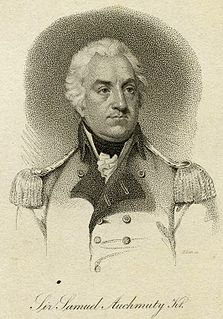 W
WLieutenant General Sir Samuel Auchmuty, was an American-born British Army general, who served in a number of military campaigns in India, Africa and South America during the Napoleonic period.
 W
WJohn Arthur Bayley was a British Army infantry officer and grandson of a baronet, who wrote a personal account of his time as an officer on campaign in India. His regiment the 52nd Regiment of Foot took part in quelling the Indian Mutiny and specifically were part of a British assault force that forced a breach at the Kashmir Gate during the Siege of Delhi.
 W
WGeneral Sir John Bell was a British soldier and magistrate. At the time of his death, he was the senior general of the British Army.
 W
WSir Robert Walter Carden, 1st Baronet was a British banker and Conservative politician.
 W
WSir Alured Clarke was a British army officer. He took charge of all British troops in Georgia in May 1780 and was then deployed to Philadelphia to supervise the evacuation of British prisoners of war at the closing stages of the American Revolutionary War. He went on to be Governor of Jamaica and then lieutenant-governor of Lower Canada in which role he had responsibility for implementing the Constitutional Act 1791. He was then sent to India where he became Commander-in-Chief of the Madras Army, then briefly Governor-General of India and finally Commander-in-Chief of India during the Fourth Anglo-Mysore War.
 W
WGeneral Sir Arthur James Lyon Fremantle was a British Army officer and a notable British witness to the Battle of Gettysburg during the American Civil War. Whilst holding the rank of "Captain and Lieutenant Colonel" he spent three months in North America, travelling through parts of the Confederate States of America and the Union. Contrary to popular belief, Colonel Fremantle was not an official representative of the United Kingdom; instead, he was something of a war tourist.
 W
WLieutenant-Colonel George Gawler, KH, was the second Governor of South Australia, at the same time serving as Resident Commissioner, from 17 October 1838 until 15 May 1841.
 W
WLieutenant-General Francis Grose was a British soldier who commanded the New South Wales Corps. As Lieutenant Governor of New South Wales he governed the colony from 1792 until 1794, in which he established military rule, abolished civil courts, and made generous land-grants to his officers. He failed to stamp out the practice of paying wages in alcoholic spirits, with consequent public drunkenness and corruption. Although he helped to improve living conditions to some degree, he was not viewed as a successful administrator.
 W
WColonel John Gurwood, British Army was a successful cavalry officer wounded at many battles on several occasions, leaving long-term emotional and physical scars. He was appointed a Companion of the Order of the Bath for his duty to the service. After Waterloo, and the re-settlement of the army on a grateful nation, Gurwood became a writer and historian. A legacy of depression and loneliness led to a tragic and untimely death.
 W
WCaptain William Hay CB was the second and last junior Joint Commissioner of Police of the Metropolis, one of two heads of the London Metropolitan Police.
 W
WGeneral Sir Martin Hunter (1757–1846) was a British Army officer, and governor of Stirling Castle.
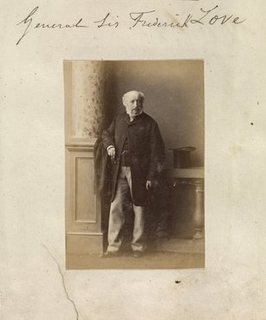 W
WGeneral Sir James Frederick Love was a British Army officer who served as Lieutenant Governor of Jersey.
 W
WThe British Army is the principal land warfare force of the United Kingdom, a part of British Armed Forces. As of 2020, the British Army comprises just over 78,880 regular (full-time) personnel and just over 30,020 reserve (part-time) personnel.
 W
WLieutenant-General Sir John Moore, was a British Army general, also known as Moore of Corunna. He is best known for his military training reforms and for his death at the Battle of Corunna, in which he repulsed a French army under Marshal Soult during the Peninsular War. After the war General Sarrazin wrote a French history of the battle, which nonetheless may have been written in light of subsequent events, stating that "Whatever Buonaparte may assert, Soult was most certainly repulsed at Corunna; and the English gained a defensive victory, though dearly purchased with the loss of their brave general Moore, who was alike distinguished for his private virtues, and his military talents."
 W
WMajor-General Sir Evan John Murray-Macgregor of Macgregor, 2nd Baronet, was a Scottish colonial administrator and senior British army officer.
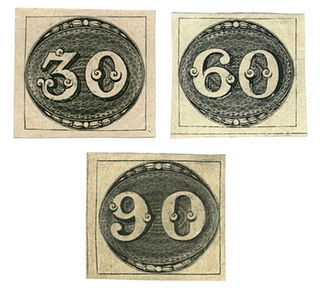 W
WLieut. Colonel George S. F. Napier was a British Army officer of the 52nd Oxfordshire Light Infantry.
 W
WSir George Thomas Napier was a British Army officer who saw service in the Peninsular War and later commanded the army of the Cape Colony.
 W
WLieutenant-General Sir Hildebrand Oakes, 1st Baronet, GCB was a British Army officer.
 W
WCharles Gordon-Lennox, 5th Duke of Richmond,, of Goodwood House near Chichester in West Sussex, was a British peer, soldier and prominent Conservative politician.
 W
WLieutenant-Colonel Sir Charles Rowan was an officer in the British Army, serving in the Peninsular War and Waterloo and the joint first Commissioner of Police of the Metropolis, head of the London Metropolitan Police.
 W
WField Marshal Sir William Shearman Rowan, was a British Army officer. He served in the Peninsular War and then the Hundred Days, fighting at the Battle of Waterloo and taking part in an important charge led by Sir John Colborne against the Imperial Guard when he was wounded. He later assisted Colborne in Colborne's new role as Acting Governor General of British North America during the rebellions by the Patriote movement in 1837. Rowan returned to Canada as Commander-in-Chief, North America in which role he made an important conciliatory speech in response to the burning of the Parliament Buildings in Montreal by an angry mob in April 1849.
 W
WField Marshal John Colborne, 1st Baron Seaton, was a British Army officer and colonial governor. After taking part as a junior officer in the Anglo-Russian invasion of Holland, Sir Ralph Abercromby's expedition to Egypt and then the War of the Third Coalition, he served as military secretary to Sir John Moore at the Battle of Corunna. He then commanded the 2nd Battalion of the 66th Regiment of Foot and, later, the 52nd Regiment of Foot at many of the battles of the Peninsular War. At the Battle of Waterloo, Colborne on his own initiative brought the 52nd Regiment of Foot forward, took up a flanking position in relation to the French Imperial Guard and then, after firing repeated volleys into their flank, charged at the Guard so driving them back in disorder.
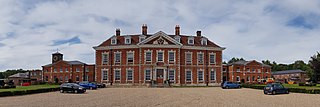 W
WGeneral Sir John Saunders Sebright, 6th Baronet was the sixth Sebright baronet, an officer in the British Army and a Member of Parliament.
 W
WMajor-General Sir Henry Torrens was an Adjutant-General to the Forces.
 W
WGeneral Cyrus Trapaud was a British Army officer.
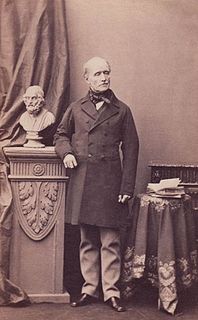 W
WField Marshal Sir Charles Yorke GCB was a senior British Army officer. He fought in many of the battles of the Peninsular War and of the Hundred Days, seeing action as an extra aide-de-camp to Major-General Frederick Adam, commander of the 3rd Light Brigade, at the Battle of Waterloo. After that he became Deputy Commander of the British forces in South Africa during the latter stages of the Eighth Xhosa War. He went on to be Military Secretary, ultimately earning promotion to field marshal for his competence in that role.